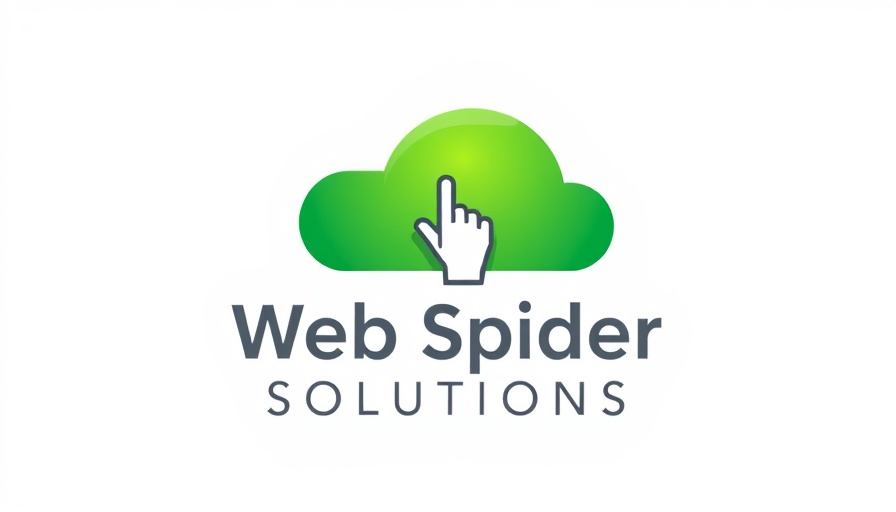
Transforming Local Insights into Global Strategies
In today's interconnected world, organizations are seeking partners that can provide not just local services but also a global impact. Web Spider Solutions, based in Noida, India, is making that leap. Their evolution from a local digital marketing agency to a global player exemplifies how leveraging skills in SEO, performance marketing, and e-commerce enablement can create measurable success. With a portfolio that now spans continents, they cater to businesses in North America, Europe, and the Middle East, demonstrating the possibility of integrating local expertise into a global strategy.
Delivering Proven Results: A Client-Centric Approach
Web Spider Solutions prides itself on a data-driven approach, which is reflected in their impressive results. Serving over 120 clients across various sectors, their services encompass everything from Meta and Google Ads management to high-conversion landing pages. Their track record—generating 4x–6x ROI on paid ad campaigns—speaks volumes about their effectiveness.
Case studies provide insights into how their methodologies lead to success. For instance, a client in the real estate sector achieved an ROI of 4.2x within just 60 days, exemplifying the effectiveness of agile marketing strategies. By focusing on transparency and communication, they ensure that clients feel involved and informed throughout the process, which fosters trust and long-term partnerships.
Specialization and Growth: Meeting Diverse Needs
The agency's commitment to understanding specific verticals has led to the establishment of specialized teams dedicated to tackling varying marketing challenges. For instance, real estate campaigns and B2B lead generation have garnered particular attention. This tailored approach not only enhances service delivery but also enables businesses to engage their target audience effectively.
Furthermore, with the rise of digital channels, Web Spider Solutions is focusing on international marketing collaborations that allow clients to tap into new markets. Their strategic influencer-led campaigns have proven particularly effective in engaging specific demographics, such as the South Asian immigrant market in North America. This targeted strategy exemplifies the agility and responsiveness required in contemporary digital marketing.
The Power of Agile Case Studies in Digital Marketing
Throughout its journey, Web Spider Solutions has implemented agile methodologies to facilitate marketing transformations. These agile case studies highlight the importance of adaptive strategies. For example, in one initiative, a lifestyle brand tripled its monthly revenue from ₹3 lakhs to ₹15 lakhs in just three months through finely-tuned SEO-driven content.
Agility in digital marketing is about rapid feedback and continuous improvement, reflecting the needs and responses of target audiences. By employing a cyclical approach—develop, measure, and revise—Web Spider Solutions exemplifies this philosophy, ensuring campaigns are not just reactive but proactively set up for success.
Client Testimonials: Building Trust Through Results
Client feedback is at the heart of any successful agency. Testimonials reflect the trust and reliability that Web Spider Solutions has built over the years. Rohit Sharma, the CEO of a home interiors brand, states, "What sets them apart is their commitment to ROI. They don’t just run ads—they grow our business.” This level of commitment is what companies seek in a digital partner, and such sentiments are echoed throughout the company’s client base.
The Future of Digital Marketing: Opportunities Ahead
As digital marketing continues to evolve, companies like Web Spider Solutions are poised to adapt and lead the charge. The incorporation of AI tools and data analytics will spark innovations in campaign strategies, optimizing results and improving customer interactions. Businesses should be proactive about integrating these trends to stay competitive and ensure their growth trajectories align with the dynamic digital landscape.
In conclusion, as Web Spider Solutions showcases, transitioning from a local player to a global leader in digital marketing involves a blend of strategic agility, innovative tactics, and an unwavering commitment to client success. By remaining adaptable and focused on results, they stand as a testament to what’s possible in the ever-evolving world of digital marketing.
To learn more about how Web Spider Solutions can elevate your digital marketing strategy, reach out to their team today!
 Add Row
Add Row  Add
Add 




Write A Comment